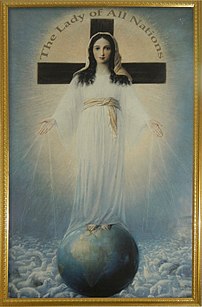 W
WOperation Amherst was a Free French and British SAS attack designed to capture intact Dutch canals, bridges and airfields during World War II. It was led by Brigadier Mike Calvert of Chindit fame.
 W
WOperation Anger, was a military operation to seize the city of Arnhem in April 1945, during the closing stages of the Second World War. It is also known as the Second Battle of Arnhem or the Liberation of Arnhem. The operation was part of the Canadian First Army's liberation of the Netherlands and was led by the 49th British Infantry Division, supported by armour of the 5th Canadian Armoured Division, Royal Air Force air strikes and boats of the Royal Navy.
 W
WThe bombing of the Bezuidenhout took place on 3 March 1945, when the Royal Air Force mistakenly bombed the Bezuidenhout neighbourhood in the Dutch city of The Hague. At the time, the neighbourhood was more densely populated than usual with evacuees from The Hague and Wassenaar; tens of thousands were left homeless and had to be quartered in the Eastern and Central Netherlands.
 W
WOperation Bodenplatte (Baseplate), launched on 1 January 1945, was an attempt by the Luftwaffe to cripple Allied air forces in the Low Countries during the Second World War. The goal of Bodenplatte was to gain air superiority during the stagnant stage of the Battle of the Bulge so that the German Army and Waffen-SS forces could resume their advance. The operation was planned for 16 December 1944, but was delayed repeatedly due to bad weather until New Year's Day, the first day that happened to be suitable.
 W
WThis is a chronological overview of the dates at which the liberation by the Allies in World War II took place of a number of Dutch cities and towns.
 W
WThe Dutch famine of 1944–45, known in the Netherlands as the Hongerwinter, was a famine that took place in the German-occupied Netherlands, especially in the densely populated western provinces north of the great rivers, during the winter of 1944–45, near the end of World War II.
 W
WThe Georgian uprising on Texel was an insurrection by the 882nd Infantry Battalion Königin Tamara of the Georgian Legion of the German Army stationed on the German occupied Dutch island of Texel. The battalion was made up of 800 Georgians and 400 Germans, with mainly German officers. It was one of the last battles in the European theatre.
 W
WOn 17 April 1945, the retreating German occupying forces inundated the polder of Wieringermeer, the Netherlands.
 W
WOperation Black Tulip was a plan proposed in 1945, just after the end of World War II, by Dutch minister of Justice Hans Kolfschoten to forcibly deport all Germans from the Netherlands. The operation lasted from 1946 to 1948 and in total 3,691 Germans were deported.
 W
WOperation Manna and Operation Chowhound were humanitarian food drops, carried out to relieve a famine in the German-occupied Netherlands, undertaken by Allied bomber crews during the final days of World War II in Europe. Manna was carried out by British RAF units, as well as squadrons from the Australian, Canadian, New Zealand and Polish air forces, between 29 April and 7 May 1945. Chowhound was undertaken by the United States Army Air Forces, which dropped, together with Operation Manna, a total of over 11,000 tons, of food into the still-unliberated western part of the Netherlands, with the acquiescence of the occupying German forces, to help feed Dutch civilians in danger of starvation.
 W
WWhile the Germans occupied the Netherlands during the Second World War (1940–1945), Allied air forces carried out a number of operations over Rotterdam and the surrounding region. These included bombing strategic installations, leaflet dropping, and during the last week of the war, the dropping of emergency food supplies.
 W
WThe Lady of All Nations is a Catholic Marian title associated with apparitions of the Blessed Virgin Mary to Ida Peerdeman of Amsterdam, Netherlands. Peerdeman claimed to have received 56 visions of the Lady from 1945 to 1959.
 W
WThe Western Front was a military theatre of World War II encompassing Denmark, Norway, Luxembourg, Belgium, the Netherlands, the United Kingdom, France, Italy, and Germany. World War II military engagements in Southern Europe and elsewhere are generally considered as separate theatres. The Western Front was marked by two phases of large-scale combat operations. The first phase saw the capitulation of the Netherlands, Belgium, and France during May and June 1940 after their defeat in the Low Countries and the northern half of France, and continued into an air war between Germany and Britain that climaxed with the Battle of Britain. The second phase consisted of large-scale ground combat, which began in June 1944 with the Allied landings in Normandy and continued until the defeat of Germany in May 1945.